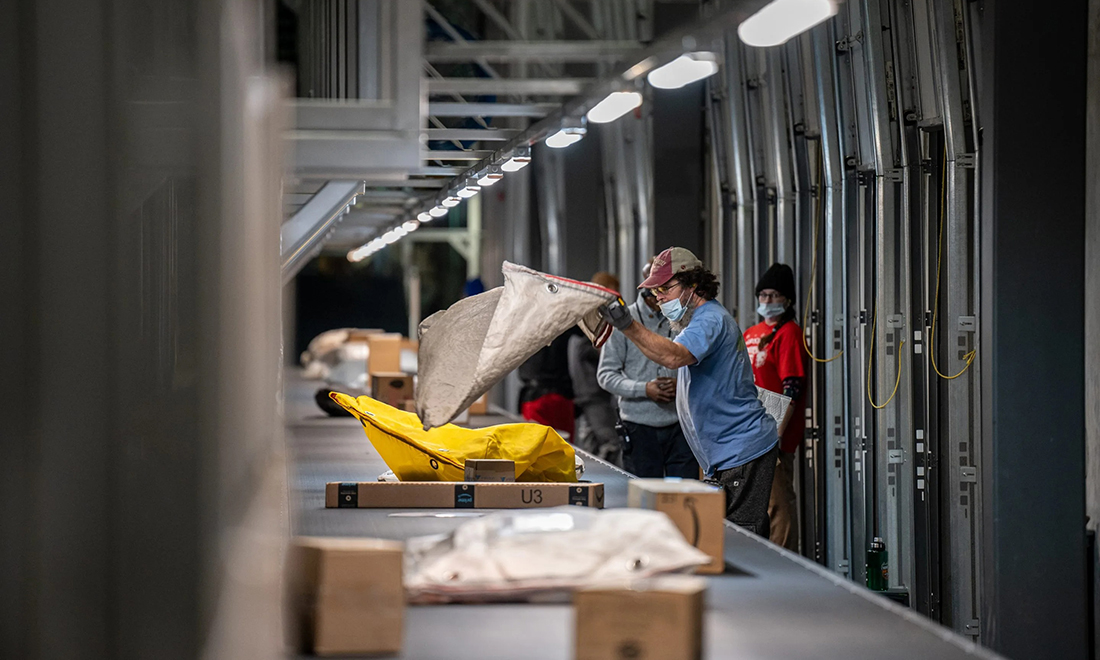
2020年3月,新冠肺炎疫情爆发给全球供应链敲响了警钟。两年多后,在俄乌冲突的持续影响下,供应链面临数十年来最严重的危机。
这场危机使得宏观经济环境非常糟糕——我们需要发展技术来应对这样糟糕的经济环境。
美国消费者明白这个问题的严重性。他们只能忍受通货膨胀带来的影响。通货膨胀率已经达到40年来的最高点。企业也注意到了这一情况。苹果公司(Apple)曾向分析师表示,供应链限制会在第二季度给公司造成80亿美元的损失。从亚洲运送一个40英尺长的集装箱到美国西海岸的成本接近1万美元,比疫情前的价格水平增加了五倍。
在后疫情世界,供应链和物流是盈利的关键。
在后疫情世界,供应链和物流是盈利的关键。随着企业设法改变物流的中心地位以适应其运营需求,技术应用和资本配置都在加速发展以满足这一需求。预计需要数年甚至数十年才能实现的变化正在更短的时间内实现。
作为投资者和分析师,我们每天都能看到红灯亮起,但它们告诉了我们什么呢?
行业调查一再发现,美国企业希望将其大部分业务“回流”到本国。在制药、半导体和国防硬件等关键领域,企业回流的意愿非常强烈,美国国会正在关注这一情况。企业也在竞相将更好的技术整合到供应链中。
在接下来的十年中,市场参与者将花费价值数百亿美元的私人和公共资本来开发技术基础设施,而这些技术基础设施是美国许多行业都需要的。
企业比以往任何时候都更重视供应链的可见性和弹性。如果以中国为基地的供应链的主要特点是价格低廉,那么未来的供应链将在可靠性方面得到优化,即使成本很高。管理者希望深入了解供应链的每一个环节,以便更好地预测未来。为此,他们依赖数字化、更好的数据实践、互联仓库和其他现有技术。
成本全线上涨——尤其是物流成本的增加——迫使公司在运输环节的每一步都进行创新以控制成本。亚马逊公司(Amazon)报告称,第一季度的物流成本飙升了23%,导致该公司出现前所未有的38亿美元的季度运营亏损。为了控制成本,最后一英里物流、更高效的地面运输以及货运卡车或集装箱船每次行程优化都是必要的。
这些令人担忧的变化都凸显了物流技术的重要性。遗憾的是,高成本将继续存在。但是,通过催化最好的物流技术,我们可以避免潜在的最坏结果。如果供应链完全崩溃,真正的通货膨胀率不会停留在8%或10%——通货膨胀率实际上是没有上限的。这使得可靠性成为最大的优势。
过去两年的经历提醒我们所有人,“不可预知事件”不再是企业在物流方面出现短缺的借口。未来的危机不可避免。企业必须做好准备,通过投资技术和基础设施来应对“不可预知事件”。企业家们正在引领潮流,他们投入数十亿美元来证明技术可以用来应对“不可预知事件”。
风险很高,但蕴藏的机遇也很大。全球物流是一个价值10万亿美元的行业。据估计,未来几年北美工业回流的价值将达到数千亿美元。与此同时,试图实现供应链创新的物流技术市场价值数百亿美元,而且还在不断增长。
西方国家正面临压力。通过采用更好的技术,我们可以保护自由国家之间的贸易,获得保护自己和维持生活方式所需的资源。(财富中文网)
杰克·麦德威尔(Jake Medwell)是美国风险投资公司8VC的创始合伙人。麦德威尔被PitchBook评为“最活跃的货运投资者”。
译者:中慧言-王芳
2020年3月,新冠肺炎疫情爆发给全球供应链敲响了警钟。两年多后,在俄乌冲突的持续影响下,供应链面临数十年来最严重的危机。
这场危机使得宏观经济环境非常糟糕——我们需要发展技术来应对这样糟糕的经济环境。
美国消费者明白这个问题的严重性。他们只能忍受通货膨胀带来的影响。通货膨胀率已经达到40年来的最高点。企业也注意到了这一情况。苹果公司(Apple)曾向分析师表示,供应链限制会在第二季度给公司造成80亿美元的损失。从亚洲运送一个40英尺长的集装箱到美国西海岸的成本接近1万美元,比疫情前的价格水平增加了五倍。
在后疫情世界,供应链和物流是盈利的关键。
在后疫情世界,供应链和物流是盈利的关键。随着企业设法改变物流的中心地位以适应其运营需求,技术应用和资本配置都在加速发展以满足这一需求。预计需要数年甚至数十年才能实现的变化正在更短的时间内实现。
作为投资者和分析师,我们每天都能看到红灯亮起,但它们告诉了我们什么呢?
行业调查一再发现,美国企业希望将其大部分业务“回流”到本国。在制药、半导体和国防硬件等关键领域,企业回流的意愿非常强烈,美国国会正在关注这一情况。企业也在竞相将更好的技术整合到供应链中。
在接下来的十年中,市场参与者将花费价值数百亿美元的私人和公共资本来开发技术基础设施,而这些技术基础设施是美国许多行业都需要的。
企业比以往任何时候都更重视供应链的可见性和弹性。如果以中国为基地的供应链的主要特点是价格低廉,那么未来的供应链将在可靠性方面得到优化,即使成本很高。管理者希望深入了解供应链的每一个环节,以便更好地预测未来。为此,他们依赖数字化、更好的数据实践、互联仓库和其他现有技术。
成本全线上涨——尤其是物流成本的增加——迫使公司在运输环节的每一步都进行创新以控制成本。亚马逊公司(Amazon)报告称,第一季度的物流成本飙升了23%,导致该公司出现前所未有的38亿美元的季度运营亏损。为了控制成本,最后一英里物流、更高效的地面运输以及货运卡车或集装箱船每次行程优化都是必要的。
这些令人担忧的变化都凸显了物流技术的重要性。遗憾的是,高成本将继续存在。但是,通过催化最好的物流技术,我们可以避免潜在的最坏结果。如果供应链完全崩溃,真正的通货膨胀率不会停留在8%或10%——通货膨胀率实际上是没有上限的。这使得可靠性成为最大的优势。
过去两年的经历提醒我们所有人,“不可预知事件”不再是企业在物流方面出现短缺的借口。未来的危机不可避免。企业必须做好准备,通过投资技术和基础设施来应对“不可预知事件”。企业家们正在引领潮流,他们投入数十亿美元来证明技术可以用来应对“不可预知事件”。
风险很高,但蕴藏的机遇也很大。全球物流是一个价值10万亿美元的行业。据估计,未来几年北美工业回流的价值将达到数千亿美元。与此同时,试图实现供应链创新的物流技术市场价值数百亿美元,而且还在不断增长。
西方国家正面临压力。通过采用更好的技术,我们可以保护自由国家之间的贸易,获得保护自己和维持生活方式所需的资源。(财富中文网)
杰克·麦德威尔(Jake Medwell)是美国风险投资公司8VC的创始合伙人。麦德威尔被PitchBook评为“最活跃的货运投资者”。
译者:中慧言-王芳
In March 2020, the onset of the COVID-19 pandemic delivered global supply chains a rude awakening. More than two years later, amid China’s strict zero-COVID policy and the ongoing fallout from Russia’s invasion of Ukraine, supply chains face their most acute crisis in decades.
That crisis is contributing to a macroeconomic environment that is downright dangerous—and we need technology to confront it.
American consumers understand the magnitude of the problem. They can’t help but feel its impact. Inflation has reached 40-year highs. Businesses see it too. Apple advised analysts last quarter that supply-chain constraints could deal an $8 billion blow to the company in Q2. The cost to ship a 40-foot container from Asia to the U.S. West Coast sits at nearly $10,000, up fivefold from pre-pandemic levels.
In a post-pandemic world, supply chain and logistics will make or break profits. As businesses try to adapt the centrality of logistics to their operations, both technology adoption and capital allocation have each accelerated to meet the moment. Changes forecast to take years—and even decades—to materialize are happening in a much shorter time period.
As investors and analysts, we see signals flashing red every day, but what are they telling us?
Industrial surveys have found over and over that U.S. businesses want to “reshore” substantial parts of their operations to this hemisphere. The appetite for reshoring is acute in critical sectors like pharmaceuticals, semiconductors, and defense hardware, and Congress is paying attention. Businesses are also racing to integrate better technologies into their supply chains.
In the next decade, market participants will spend private and public capital worth tens of billions of dollars to develop the technical infrastructure needed to strengthen many sectors in the U.S.
Businesses are prioritizing supply-chain visibility and resilience more than ever. If the animating concern of the China-based supply chain was cheap prices, tomorrow’s supply chains will be optimized for reliability, even if it comes at a higher cost. Managers want insights into every step of their supply chain to better forecast the future. To do so, they’re relying on digitization, better data practices, connected warehouses, and other technologies that already exist.
The environment of cost inflation across the board—especially the increased costs of logistics—is forcing companies to innovate at every step of transport to control costs. Amazon reported that fulfillment costs surged 23% in Q1, which caused the company an unprecedented $3.8 billion quarterly operating loss. Last-mile logistics, more efficient ground transportation, and the optimization of every trip delivery trucks or container ships make will be needed to keep costs under control.
Each of these alarming developments underscores the importance of logistics technology. Unfortunately, high costs are here to stay. But by catalyzing the best technologies in logistics, we can avoid the worst potential outcomes. If the supply chain breaks down completely, the true inflation rate would not stop at 8% or 10%—it would be effectively infinite. That makes reliability the biggest premium of all.
The past two years should remind us all that “unpredictable events” are no longer an excuse for businesses to come up short on logistics. Future crises are inevitable. Businesses must prepare by investing in the technology and infrastructure needed to confront them. Entrepreneurs are leading the way, putting billions on the line to prove that technology can get the job done.
The stakes are high, but the opportunity is also massive. Global logistics is a $10 trillion industry. The value of industrial reshoring to North America in future years is estimated at the level of hundreds of billions of dollars in activity. Meanwhile, the logistics technology market managing supply-chain innovation is worth tens of billions—and it's growing.
The West is under pressure. By adopting better technologies, we can protect commerce between free nations and secure the resources we need to defend ourselves and maintain our way of life.
Jake Medwell is a founding partner at the U.S.-based venture firm 8VC. Medwell was named the “most active freight investor” by PitchBook.






